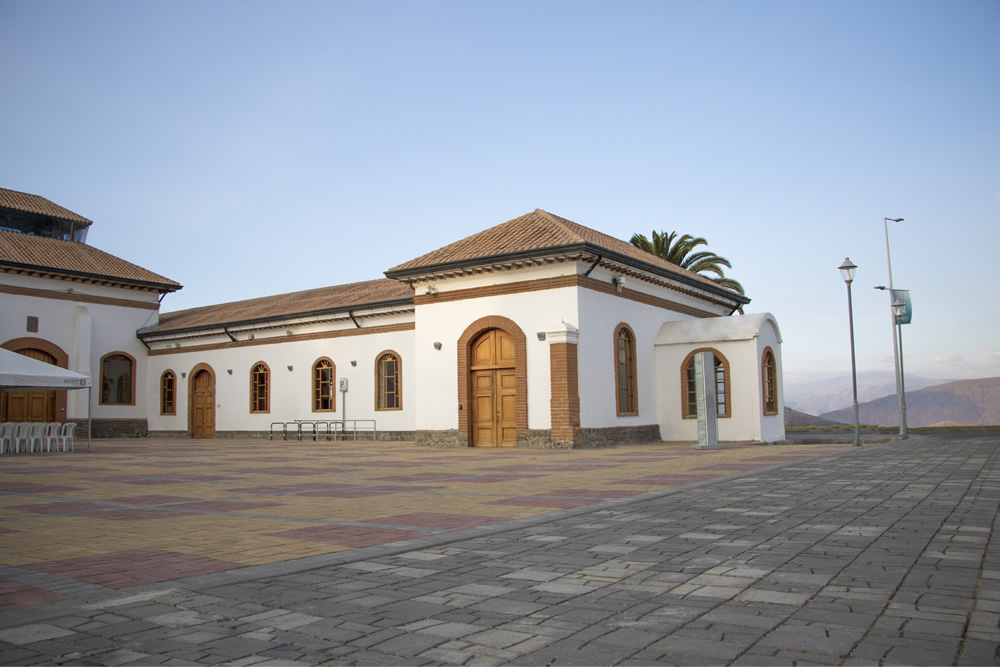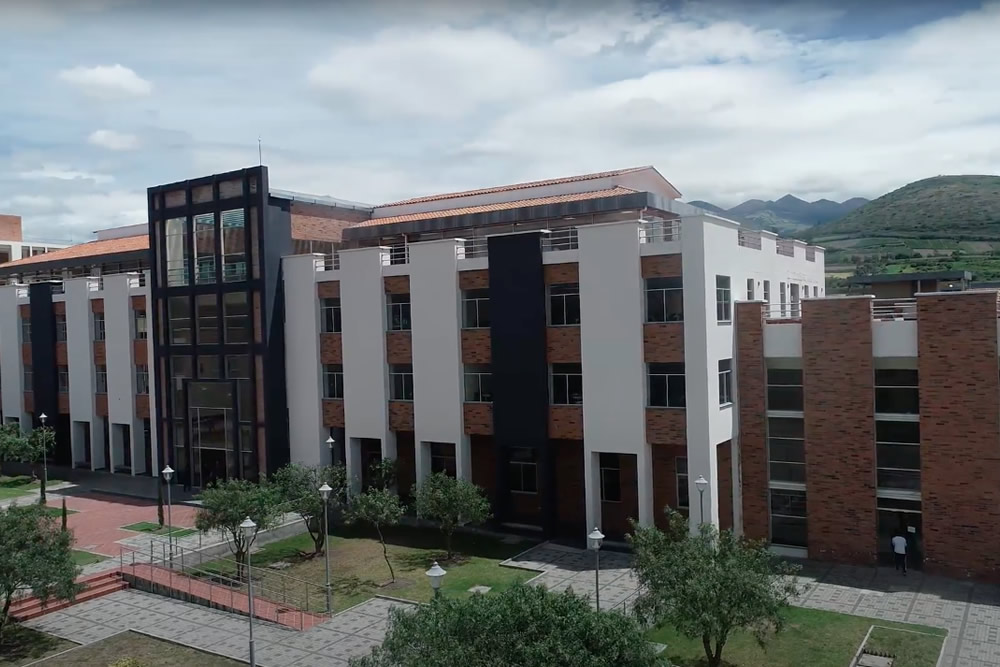Bacteria associated with sessile marine invertebrates as a source of active metabolites for their application in human and animal health / Maily Selena González Avilés ; tutor Frank Alexis
Tipo de material: TextoIdioma: Inglés Idioma del resumen: Español Fecha de copyright: Urcuquí, 2021Descripción: 81 hojas : ilustraciones (algunas a color) ; 30 cm + 1 CD-ROMTema(s): Recursos en línea: Nota de disertación: Trabajo de integración curricular (Biólogo/a). Universidad de Investigación de Tecnología Experimental Yachay. Urcuquí, 2021 Resumen: In recent decades, sessile marine invertebrates have been the focus of attention in the search for potential industrial and pharmaceutical applications. Sponges and zoanthids have been reported as promising candidates for the extraction of bioactive compounds, useful for treating diseases. In particular, well-represented zoanthids in El Pelado Marine Reserve (REMAPE) have shown great potential for bioactive compounds such as zoanthamines. However, the associated microorganisms have been little explored. In this context, this work aimed to isolate bacteria associated with Zoanthus pulchellus using microbiological and biochemical techniques, molecular identification and bioinformatic analysis techniques to identify each bacterial species. Thirteen bacterial isolates were identified, belonging to the species Pseudovibrio denitrificans, Vibrio harveyi, Tenacibaculum mesophilum, Microbulbifer variabilis, Ferrimonas kyonanensis, Pseudoalteromonas luteoviolacea, Agarivorans litoreus and Bacillus spp. Bacterial isolates were cultured, extracts and fractions were made and evaluated against shrimp pathogenic vibrios, including Vibrio harveyi (strain E22), Vibrio campbellii (strain LM2013), Vibrio vulnificus (strain S2), and Vibrio parahaemolyticus (strain BA94C2, positive to PirA/PirB toxins). The crude extracts and the culture supernatants did not show microbicidal activity towards the evaluated vibrios. However, when the ability of bacteria to exclude pathogenic vibrios was evaluated in a competitive exclusion test, using three concentrations (104, 105 and 106 CFU mL-1), the best results were obtained with bacteria Z2, Z13 and Z14 showing inhibitory effects towards pathogenic vibrios. In addition, we evaluated the ability of extracts at non-microbicidal doses to interrupt biofilm formation in Vibrio parahaemolyticus, which causes acute hepatopancreas necrosis disease (AHPND). Three of these extracts (Z1, Z3 and Z16) were able to significantly inhibit biofilm formation. The extracts and fractions obtained from UPLC-DAD-ELSD were also evaluated against three human carcinoma cell lines MCF-7 (breast cancer), Caco-2 (colon cancer) and Hep-G2 (cancer of the liver). The tumor lines were cultured in standard culture media and the affectation by the fractions was determined by means of the cell viability assay by reduction of the compound 3-(4,5-Dimethylthiazol-2-yl)-2,5-diphenyltetrazolium bromide (MTT). The fraction (F-3) of the isolate encoded Z10 (Pseudoalteromonas luteoviolacea) showed a significant cytotoxic effect (P <0.05) compared to the control group (cells without extracts). The toxicity is explained because cell viability was not evidenced, and this was observed for the three cell lines evaluated. These results demonstrate that the bacteria associated with Zoanthus pulchellus have the potential to be used in human and animal health, since they showed microbicidal activities when evaluated against shrimp pathogens and similarly demonstrated cytotoxic activity when evaluated against tumor lines.
TextoIdioma: Inglés Idioma del resumen: Español Fecha de copyright: Urcuquí, 2021Descripción: 81 hojas : ilustraciones (algunas a color) ; 30 cm + 1 CD-ROMTema(s): Recursos en línea: Nota de disertación: Trabajo de integración curricular (Biólogo/a). Universidad de Investigación de Tecnología Experimental Yachay. Urcuquí, 2021 Resumen: In recent decades, sessile marine invertebrates have been the focus of attention in the search for potential industrial and pharmaceutical applications. Sponges and zoanthids have been reported as promising candidates for the extraction of bioactive compounds, useful for treating diseases. In particular, well-represented zoanthids in El Pelado Marine Reserve (REMAPE) have shown great potential for bioactive compounds such as zoanthamines. However, the associated microorganisms have been little explored. In this context, this work aimed to isolate bacteria associated with Zoanthus pulchellus using microbiological and biochemical techniques, molecular identification and bioinformatic analysis techniques to identify each bacterial species. Thirteen bacterial isolates were identified, belonging to the species Pseudovibrio denitrificans, Vibrio harveyi, Tenacibaculum mesophilum, Microbulbifer variabilis, Ferrimonas kyonanensis, Pseudoalteromonas luteoviolacea, Agarivorans litoreus and Bacillus spp. Bacterial isolates were cultured, extracts and fractions were made and evaluated against shrimp pathogenic vibrios, including Vibrio harveyi (strain E22), Vibrio campbellii (strain LM2013), Vibrio vulnificus (strain S2), and Vibrio parahaemolyticus (strain BA94C2, positive to PirA/PirB toxins). The crude extracts and the culture supernatants did not show microbicidal activity towards the evaluated vibrios. However, when the ability of bacteria to exclude pathogenic vibrios was evaluated in a competitive exclusion test, using three concentrations (104, 105 and 106 CFU mL-1), the best results were obtained with bacteria Z2, Z13 and Z14 showing inhibitory effects towards pathogenic vibrios. In addition, we evaluated the ability of extracts at non-microbicidal doses to interrupt biofilm formation in Vibrio parahaemolyticus, which causes acute hepatopancreas necrosis disease (AHPND). Three of these extracts (Z1, Z3 and Z16) were able to significantly inhibit biofilm formation. The extracts and fractions obtained from UPLC-DAD-ELSD were also evaluated against three human carcinoma cell lines MCF-7 (breast cancer), Caco-2 (colon cancer) and Hep-G2 (cancer of the liver). The tumor lines were cultured in standard culture media and the affectation by the fractions was determined by means of the cell viability assay by reduction of the compound 3-(4,5-Dimethylthiazol-2-yl)-2,5-diphenyltetrazolium bromide (MTT). The fraction (F-3) of the isolate encoded Z10 (Pseudoalteromonas luteoviolacea) showed a significant cytotoxic effect (P <0.05) compared to the control group (cells without extracts). The toxicity is explained because cell viability was not evidenced, and this was observed for the three cell lines evaluated. These results demonstrate that the bacteria associated with Zoanthus pulchellus have the potential to be used in human and animal health, since they showed microbicidal activities when evaluated against shrimp pathogens and similarly demonstrated cytotoxic activity when evaluated against tumor lines.
| Tipo de ítem | Biblioteca actual | Signatura | Copia número | Estado | Fecha de vencimiento | Código de barras | Reserva de ítems | |
|---|---|---|---|---|---|---|---|---|
 Tesis
Tesis
|
Biblioteca Yachay Tech | ECBI0105 (Navegar estantería(Abre debajo)) | 1 | No para préstamo | T000347 |
Trabajo de integración curricular (Biólogo/a). Universidad de Investigación de Tecnología Experimental Yachay. Urcuquí, 2021
Incluye referencias bibliográficas (páginas 52-62)
Trabajo de integración curricular con acceso restringido
Texto (Hypertexto links)
In recent decades, sessile marine invertebrates have been the focus of attention in the search for potential industrial and pharmaceutical applications. Sponges and zoanthids have been reported as promising candidates for the extraction of bioactive compounds, useful for treating diseases. In particular, well-represented zoanthids in El Pelado Marine Reserve (REMAPE) have shown great potential for bioactive compounds such as zoanthamines. However, the associated microorganisms have been little explored. In this context, this work aimed to isolate bacteria associated with Zoanthus pulchellus using microbiological and biochemical techniques, molecular identification and bioinformatic analysis techniques to identify each bacterial species. Thirteen bacterial isolates were identified, belonging to the species Pseudovibrio denitrificans, Vibrio harveyi, Tenacibaculum mesophilum, Microbulbifer variabilis, Ferrimonas kyonanensis, Pseudoalteromonas luteoviolacea, Agarivorans litoreus and Bacillus spp. Bacterial isolates were cultured, extracts and fractions were made and evaluated against shrimp pathogenic vibrios, including Vibrio harveyi (strain E22), Vibrio campbellii (strain LM2013), Vibrio vulnificus (strain S2), and Vibrio parahaemolyticus (strain BA94C2, positive to PirA/PirB toxins). The crude extracts and the culture supernatants did not show microbicidal activity towards the evaluated vibrios. However, when the ability of bacteria to exclude pathogenic vibrios was evaluated in a competitive exclusion test, using three concentrations (104, 105 and 106 CFU mL-1), the best results were obtained with bacteria Z2, Z13 and Z14 showing inhibitory effects towards pathogenic vibrios. In addition, we evaluated the ability of extracts at non-microbicidal doses to interrupt biofilm formation in Vibrio parahaemolyticus, which causes acute hepatopancreas necrosis disease (AHPND). Three of these extracts (Z1, Z3 and Z16) were able to significantly inhibit biofilm formation. The extracts and fractions obtained from UPLC-DAD-ELSD were also evaluated against three human carcinoma cell lines MCF-7 (breast cancer), Caco-2 (colon cancer) and Hep-G2 (cancer of the liver). The tumor lines were cultured in standard culture media and the affectation by the fractions was determined by means of the cell viability assay by reduction of the compound 3-(4,5-Dimethylthiazol-2-yl)-2,5-diphenyltetrazolium bromide (MTT). The fraction (F-3) of the isolate encoded Z10 (Pseudoalteromonas luteoviolacea) showed a significant cytotoxic effect (P <0.05) compared to the control group (cells without extracts). The toxicity is explained because cell viability was not evidenced, and this was observed for the three cell lines evaluated. These results demonstrate that the bacteria associated with Zoanthus pulchellus have the potential to be used in human and animal health, since they showed microbicidal activities when evaluated against shrimp pathogens and similarly demonstrated cytotoxic activity when evaluated against tumor lines.
Textos en inglés con resúmenes en español e inglés
No hay comentarios en este titulo.



